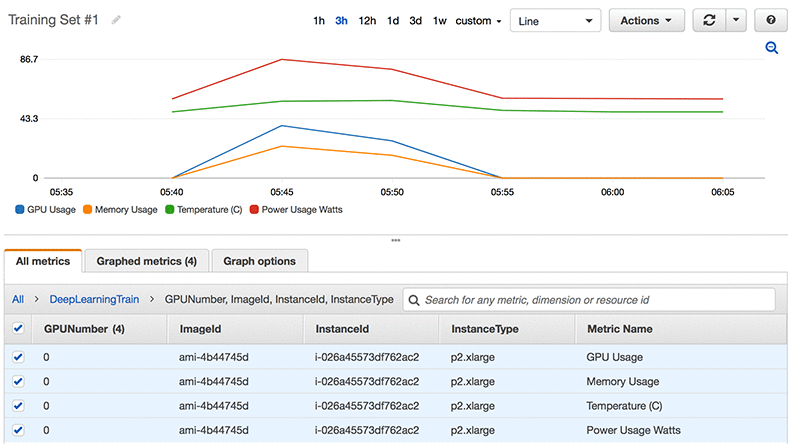AWS Machine Learning Blog
Category: Amazon CloudWatch
Open source observability for AWS Inferentia nodes within Amazon EKS clusters
This post walks you through the Open Source Observability pattern for AWS Inferentia, which shows you how to monitor the performance of ML chips, used in an Amazon Elastic Kubernetes Service (Amazon EKS) cluster, with data plane nodes based on Amazon Elastic Compute Cloud (Amazon EC2) instances of type Inf1 and Inf2.
Techniques and approaches for monitoring large language models on AWS
Large Language Models (LLMs) have revolutionized the field of natural language processing (NLP), improving tasks such as language translation, text summarization, and sentiment analysis. However, as these models continue to grow in size and complexity, monitoring their performance and behavior has become increasingly challenging. Monitoring the performance and behavior of LLMs is a critical task […]
Build an internal SaaS service with cost and usage tracking for foundation models on Amazon Bedrock
In this post, we show you how to build an internal SaaS layer to access foundation models with Amazon Bedrock in a multi-tenant (team) architecture. We specifically focus on usage and cost tracking per tenant and also controls such as usage throttling per tenant. We describe how the solution and Amazon Bedrock consumption plans map to the general SaaS journey framework. The code for the solution and an AWS Cloud Development Kit (AWS CDK) template is available in the GitHub repository.
Unlocking language barriers: Translate application logs with Amazon Translate for seamless support
This post addresses the challenge faced by developers and support teams when application logs are presented in languages other than English, making it difficult for them to debug and provide support. The proposed solution uses Amazon Translate to automatically translate non-English logs in CloudWatch, and provides step-by-step guidance on deploying the solution in your environment.
Enable pod-based GPU metrics in Amazon CloudWatch
This post details how to set up container-based GPU metrics and provides an example of collecting these metrics from EKS pods.
Build a centralized monitoring and reporting solution for Amazon SageMaker using Amazon CloudWatch
In this post, we present a cross-account observability dashboard that provides a centralized view for monitoring SageMaker user activities and resources across multiple accounts. It allows the end-users and cloud management team to efficiently monitor what ML workloads are running, view the status of these workloads, and trace back different account activities at certain points of time.
Getting started with the Amazon Kendra SharePoint Online connector
Amazon Kendra is a highly accurate and easy-to-use enterprise search service powered by machine learning (ML). To get started with Amazon Kendra, we offer data source connectors to get your documents easily ingested and indexed. This post describes how to use Amazon Kendra’s SharePoint Online connector. To allow the connector to access your SharePoint Online […]
Use Amazon CloudWatch custom metrics for real-time monitoring of Amazon Sagemaker model performance
The training and learning process of deep learning (DL) models can be expensive and time consuming. It’s important for data scientists to monitor the model metrics, such as the training accuracy, training loss, validation accuracy, and validation loss, and make informed decisions based on those metrics. In this blog post, I’ll show you how to […]
Monitoring GPU Utilization with Amazon CloudWatch
Deep learning requires a large amount of matrix multiplications and vector operations that can be parallelized by GPUs (graphics processing units) because GPUs have thousands of cores. Amazon Web Services allows you to spin up P2 or P3 instances that are great for running Deep Learning frameworks such as MXNet, which emphasizes speeding up the deployment […]








